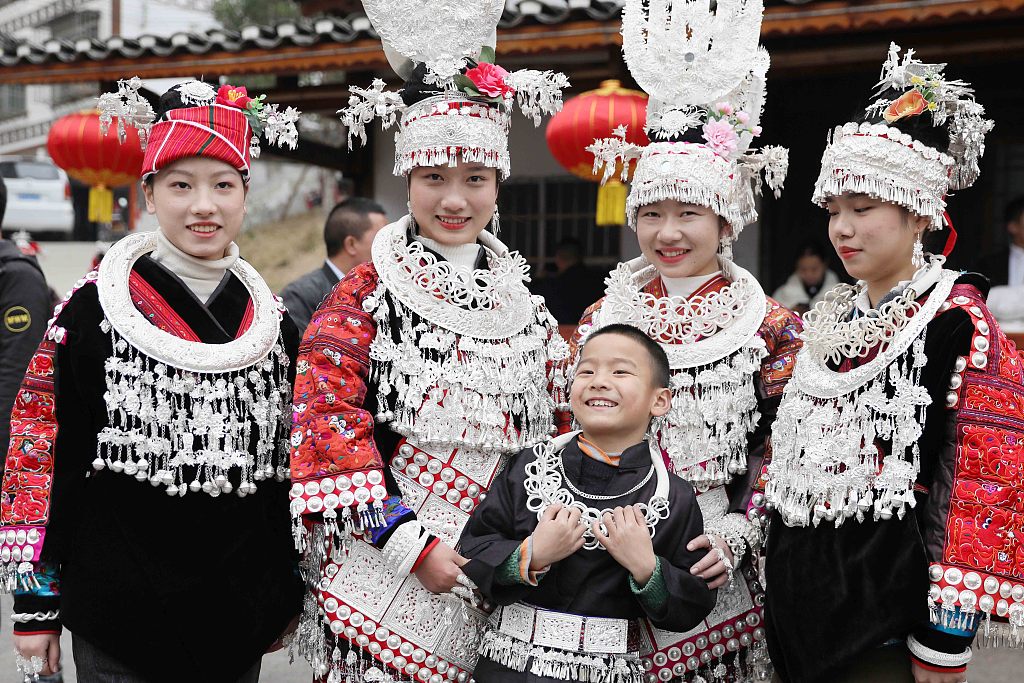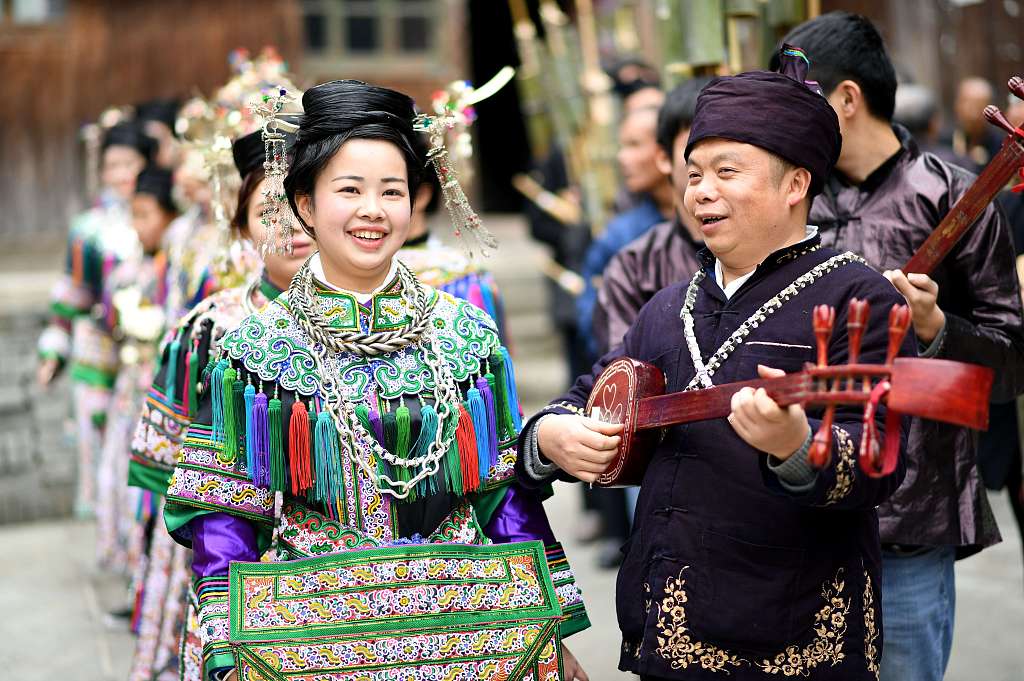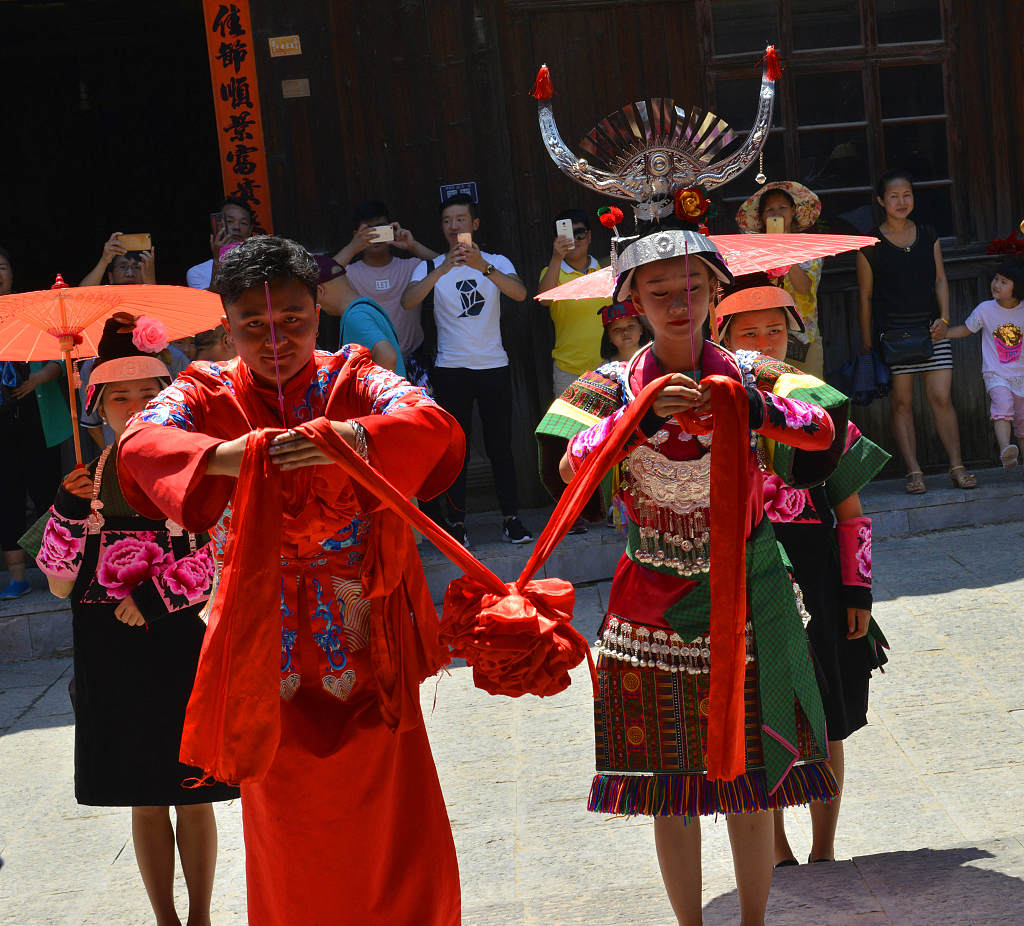The Qiandongnan area in the southeastern part of Guizhou Province was recently listed among the five national cultural protection areas accredited by China's Ministry of Culture and Tourism.
It spans the entire Qiandongnan Miao and Dong Autonomous Prefecture, where millions of ethnic Miao and Dong people live, accounting for more than a half of the population.

Miao people in ethnic costumes celebrate at a town in Qiandongnan Miao and Dong Autonomous Prefecture, Guizhou Province, on Feb. 1, 2023, to welcome the Lantern Festival. /CFP
Miao people in ethnic costumes celebrate at a town in Qiandongnan Miao and Dong Autonomous Prefecture, Guizhou Province, on Feb. 1, 2023, to welcome the Lantern Festival. /CFP
Blessed with a unique natural landscape, joyous singing and dancing performances, various ethnic festivals and a great diversity of handicrafts, the Qiandongnan area has been a favored tourist attraction for visitors at home and abroad to enjoy local ethnic culture and color.
Apart from the Grand Song of Dong Nationality, which was inscribed on the Representative List of the Intangible Cultural Heritage of Humanity by UNESCO in 2009, the area is also home to 56 national intangible cultural heritage items and 218 provincial-level heritage items.

Dong people don ethnic costumes for a song-and-dance performance in Rongjiang County, Qiandongnan Miao and Dong Autonomous Prefecture, Guizhou Province. /CFP
Dong people don ethnic costumes for a song-and-dance performance in Rongjiang County, Qiandongnan Miao and Dong Autonomous Prefecture, Guizhou Province. /CFP
This rich cultural heritage is not only a treasure of human civilization, but also an important source of income for local people.
For example in recent years, Dali Village has organized 30 artisans to weave a variety of colorful belts and sell them to tourists.
Ancient Dong embroidery skills have been better passed down this way, bringing more income for locals to improve their livelihoods, according to the head of Dali Village.
"In the past, I weaved and embroidered belts for our village. But now I can enjoy the economic benefit of weaving," said a villager.

Several Miao women embroider cloth at a factory in Qiandongnan Miao and Dong Autonomous Prefecture, Guizhou Province. /CFP
Several Miao women embroider cloth at a factory in Qiandongnan Miao and Dong Autonomous Prefecture, Guizhou Province. /CFP
To better protect and spread local culture, more than 1,000 schools and institutions in the Qiandongnan area have introduced intangible cultural heritage courses and training, giving the young generation more opportunities to learn about their cultural heritages and related skills.

Xiasi Town in Qiandongnan Miao and Dong Autonomous Prefecture of Guizhou Province treats tourists to a wedding ceremony performance by the Miao people. /CFP
Xiasi Town in Qiandongnan Miao and Dong Autonomous Prefecture of Guizhou Province treats tourists to a wedding ceremony performance by the Miao people. /CFP
Local authorities have also launched a range of activities based on ethnic festivals to attract more tourists and provide them with a unique travel experience.